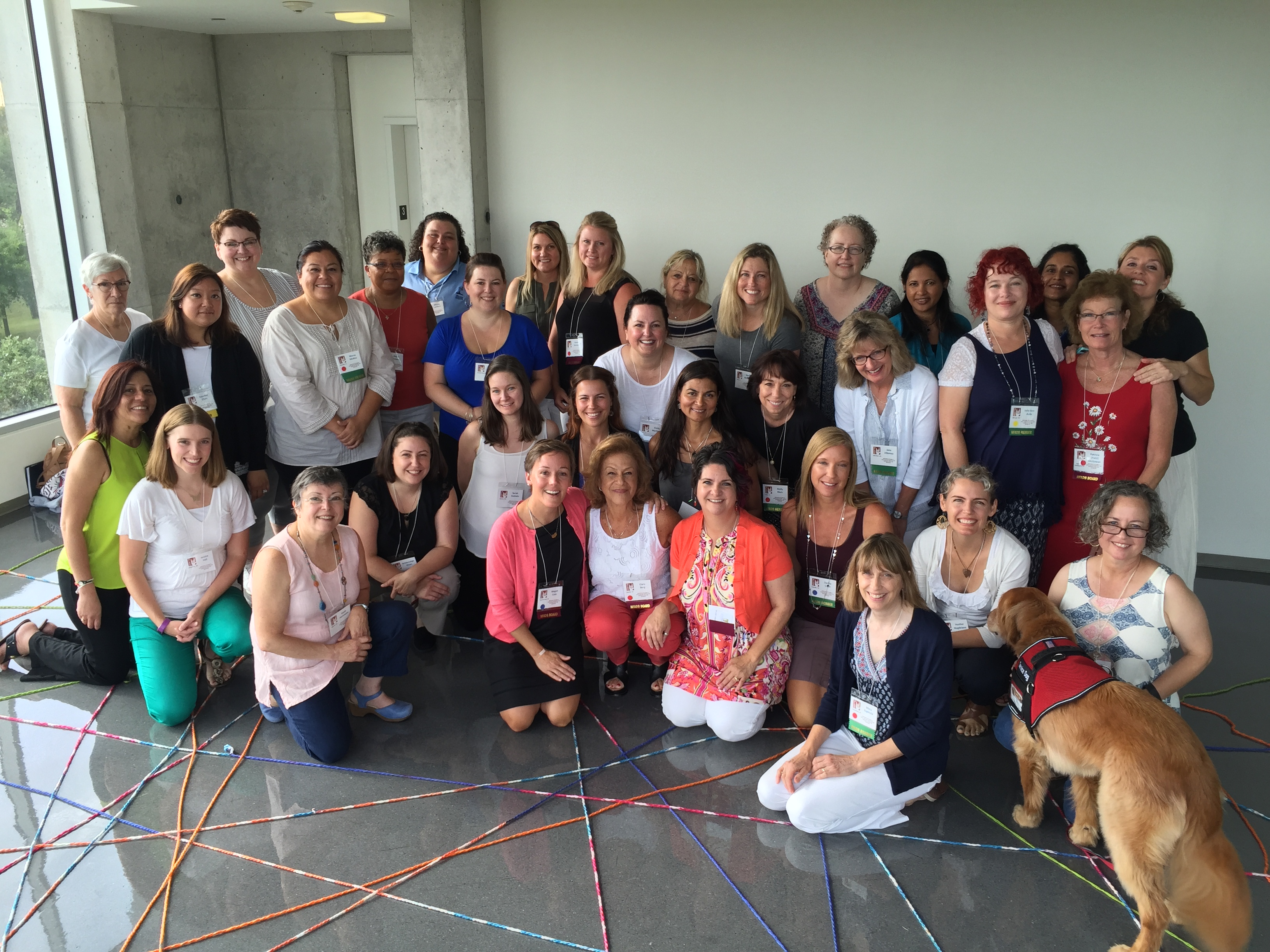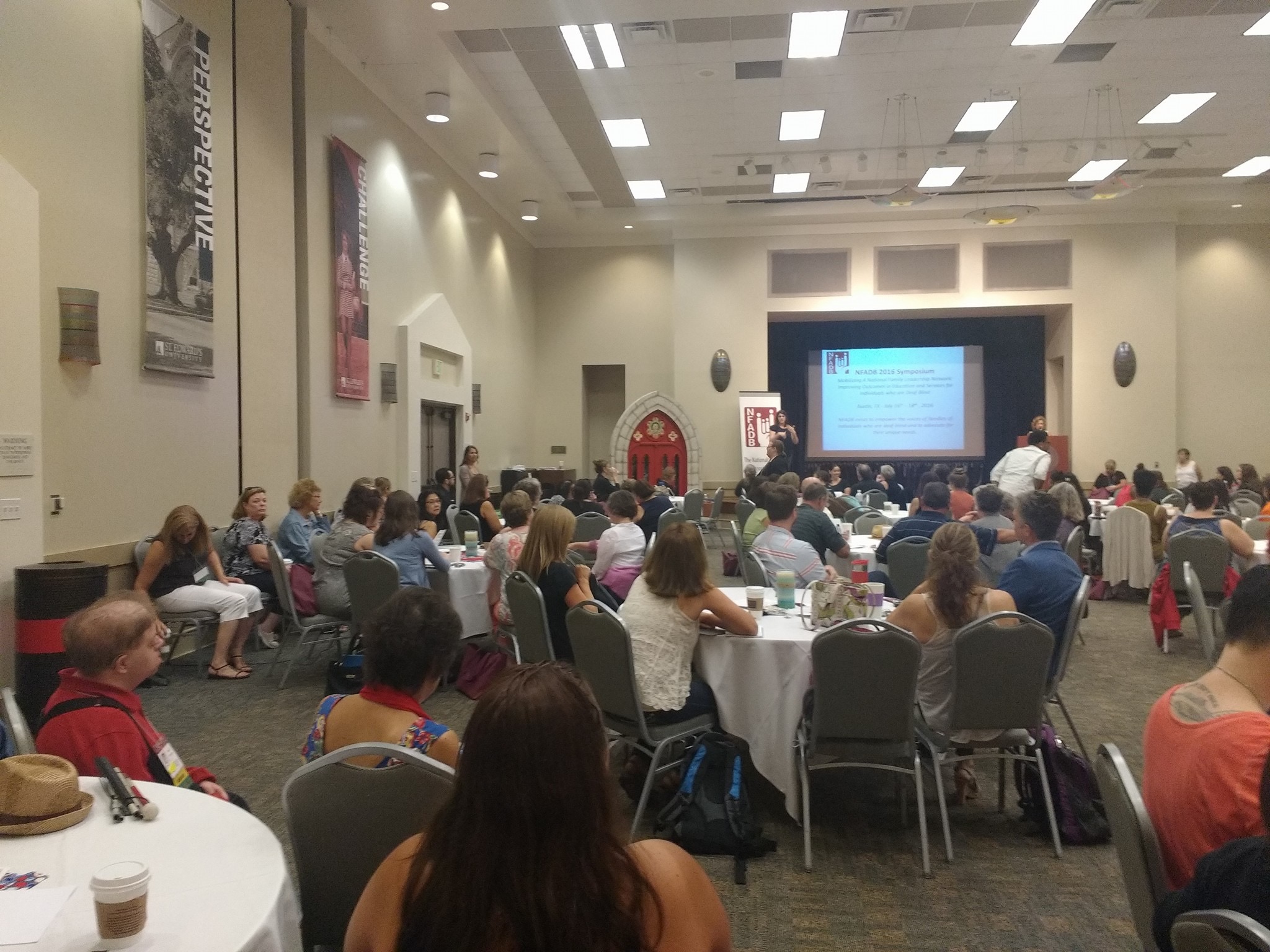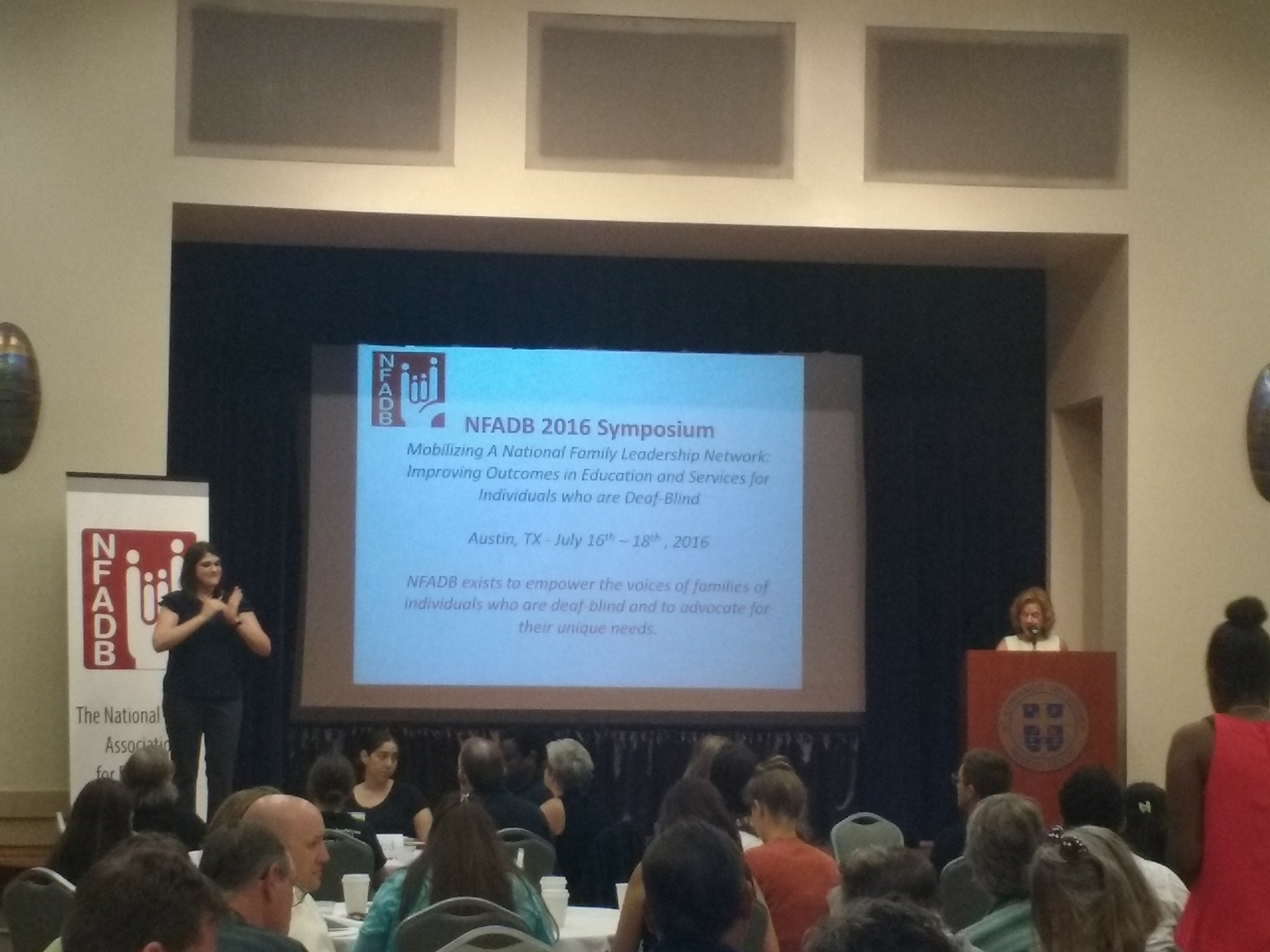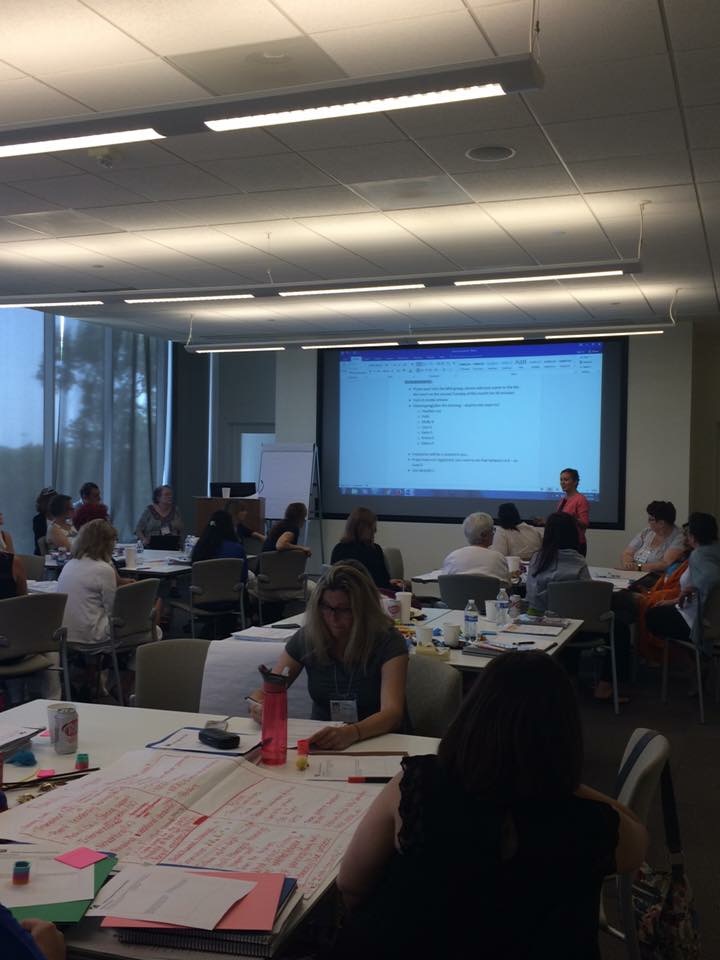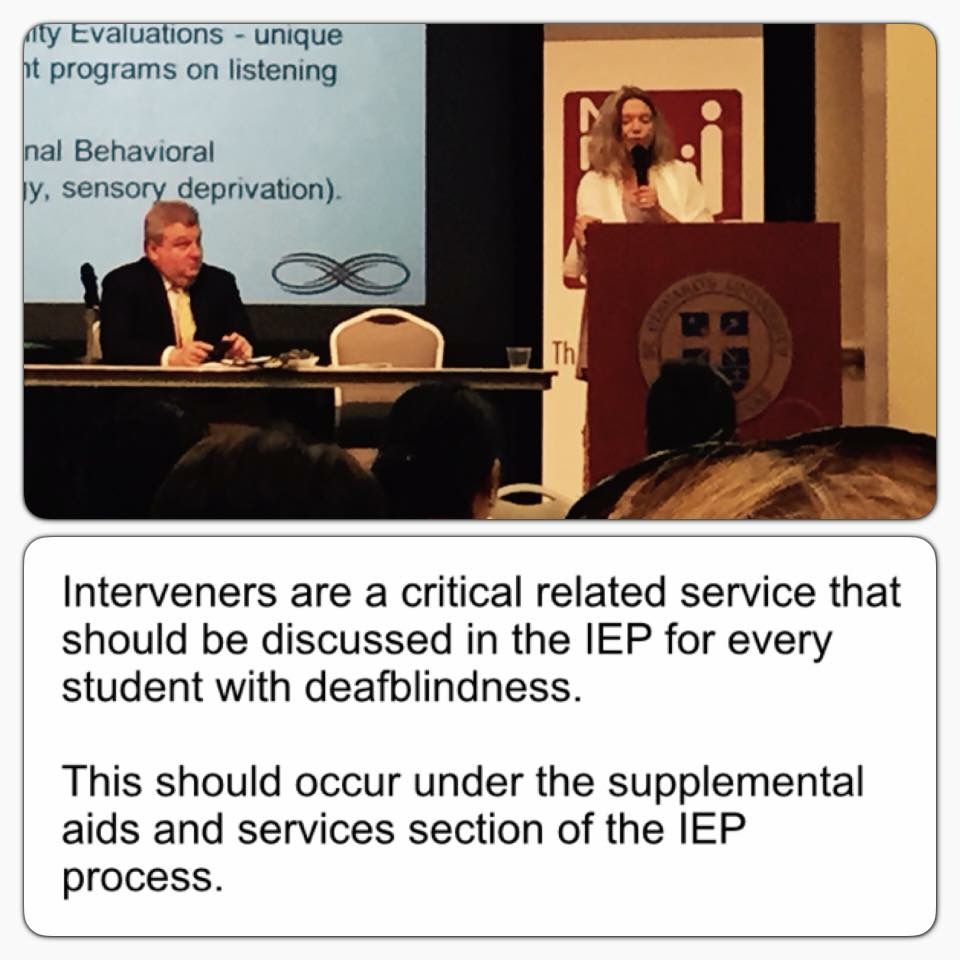“How was your conference?”
It’s a question many people have asked me. Others have no idea what a loaded question it is. My quick ‘go to’ answer to this often quick exchange has been to simply say “Amazing! I am so full.” But those four words mean so much more than I think many can begin to understand.
Several months ago I first accepted an invite to attend the 2016 Deafblind Symposium. I was immediately excited about learning more to help my family & others. I was not sure what to really expect when I boarded my plane for Austin, TX but had been told I would likely be returning home on overload. Sign me up! I was ecstatic! I was ready to share & learn!
I never could have anticipated how much this conference would affect me in the many ways it did. I barely slept in my attempt to soak up as much time as possible with the phenomenal parents, advocates & professionals.

image1z 
image3z
I loved hearing from individuals with deafblindness who presented themselves. I was in awe of the multiple methods of communication occurring right in front of me. A few of the modes of communication, such as haptics, I had only ever seen videos of or read about. I sat in complete admiration as I listened to Robbie Blaha present and knew I could listen to her all day (or more!). I was grateful to hear more about the Cogswell-Macy Act from one of the individuals who contributed to writing it, Mark Richert, Director of Public Policy for the American Foundation for the Blind.

image2x 
image1f
I expected to go share knowledge and learn from others, which definitely happened. However, what I didn’t expect at all or ever see coming was to be so incredibly inspired. At one specific moment, during a session on transition, I found myself moved to tears. If you know me at all, this rarely ever happens. But there I sat, attempting to not ugly cry too noticeably, while dabbing my eyes with my left hand & scribbling notes as fast as I could with my right. I was listening to another parent, whose son had passed, share about these amazing and creative ways she had helped her son to work within their community. I was emotionally overwhelmed and filled with so much hope. Thank you, Molly Black, for doing so much more than you likely realized when you shared about your son.
I look back now and know without a doubt that this specific session moved me so much not only because it filled me with such hope. It moved me because I allowed myself to hope for my son’s future in a way I had never done before. See, when you are told your son has a diagnosis like Zellweger spectrum disorder (PBD-ZSD), it’s really hard to think & plan for their future. I have learned to do this in stages throughout his life. When he was 18 months old, I was not sure if he would ever attend school. When he was three years old, he started a pre-k program at our local school. I will never forget my very firm declaration about the importance of quality of life and it being my top priority at my first IEP meeting. He is now 16 years old and as terrified as I am about our future, I had a glimpse of hope for his future. I am now planning for how he can transition to adulthood and successfully contribute to our community.
Another extremely heartwarming moment was seeing the GFPD’s name and brochures displayed at this conference. I looked at the GFPD display sitting between the Charge Syndrome Foundation and Helen Keller National Center displays as if I were a proud parent witnessing her child’s first words. In a way, it was exactly that. I felt like it was the GFPD’s first real opportunity to communicate to the deafblind community: “Hey! We are here! We exist!” And just like any child’s firsts, I took a picture right away!
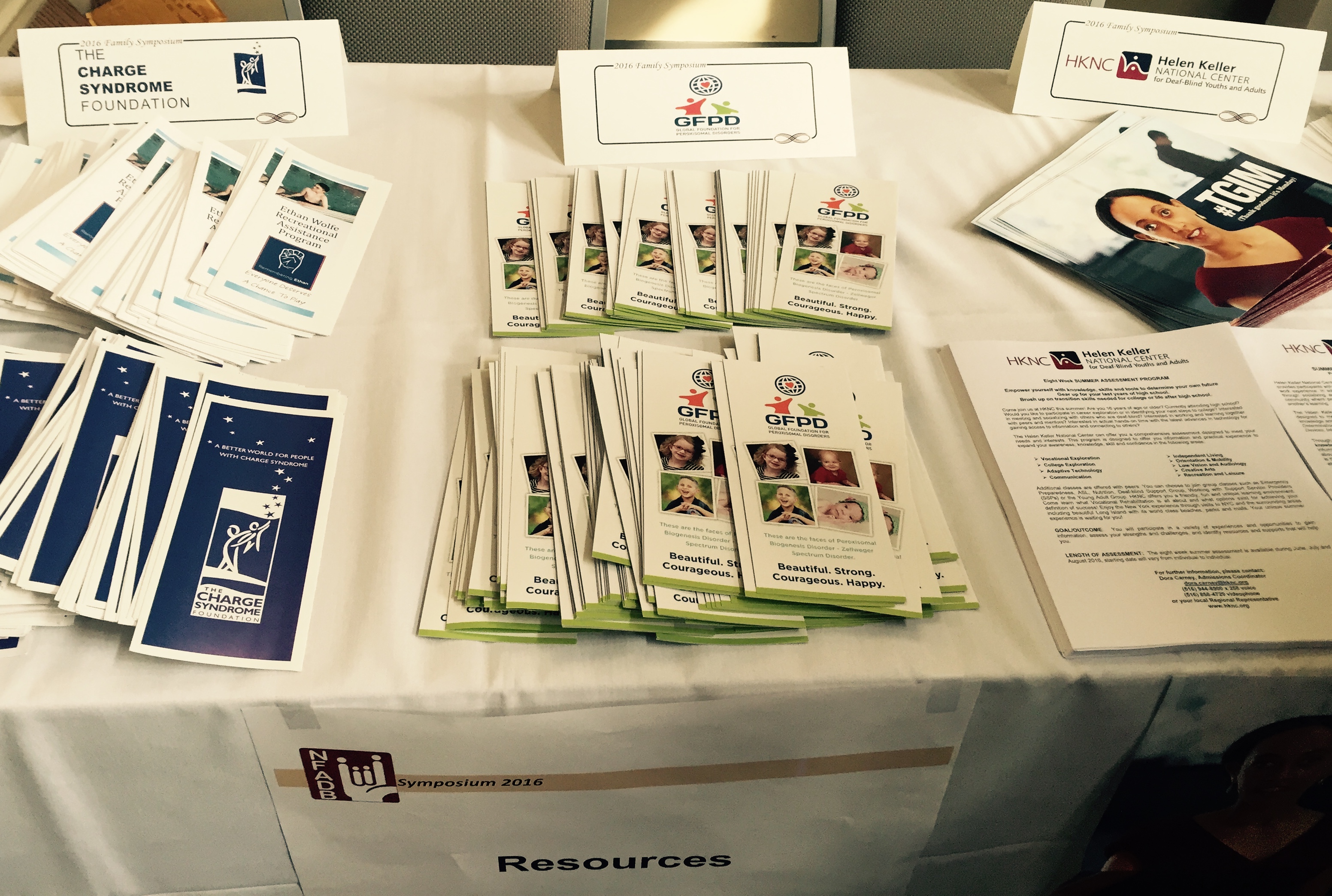
I arrived a day before the Deafblind Symposium began to spend an entire day receiving Family Engagement Coordinator (FEC) training. This training included presenters but was very hands on too. We worked together in groups and as a whole group to better identify the needs of families, need for FEC skills and training, available resources, etc. During the symposium we also attended group sessions with a range of specific topics from deafblindness in the educational setting (i.e. IEP’s, transition, etc.) to the complex medical needs combined with deafblindness (i.e. collaboration and communication with multiple medical professionals, etc.).
Another incredible thing happened while attending this conference too. I was attending with not one but two other moms to children with deafblindness caused by PBD-ZSD. This may not seem like a lot if do not know that we only have approximately 89 individuals on our registry living with PBD in the US. I had met one of these moms before at the GFPD Family & Scientific Conferences, but the other mom I had only ever known from giving and receiving support through online support communities, social media and other deafblind related trainings.
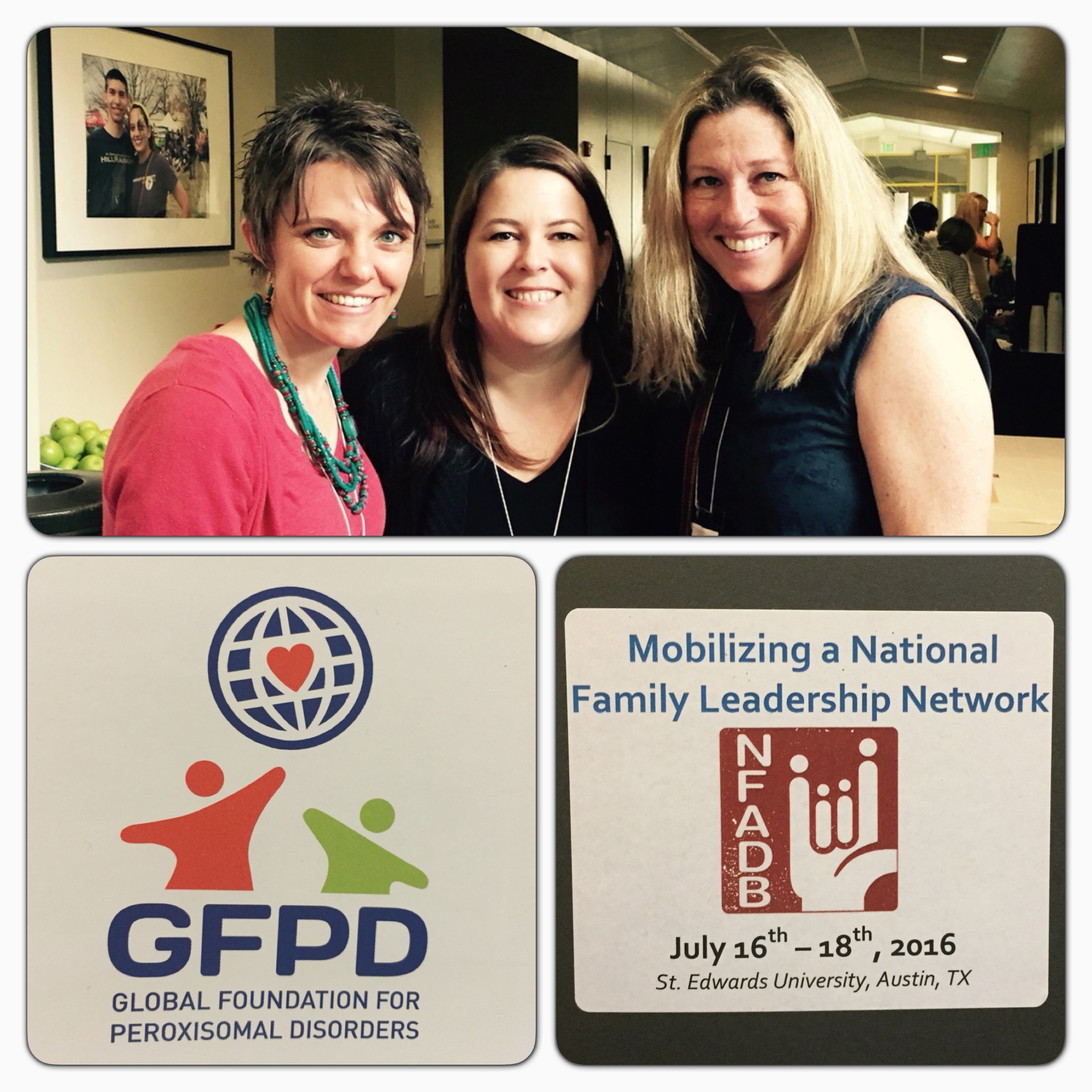
Its seems very fitting to have shared this opportunity with other PBD moms & and to now share about my experiences with my GFPD family, since the GFPD is the reason I first realized how much deafblindness was impacting our family. I was sitting in one of many breakout sessions, at the first GFPD conference, and had no idea how these sessions would end up leading to so many positive changes for our family. I could have never guessed that just before the GFPD’s 6th birthday our family would be where we are today. I went from realizing I had a lot to learn (and still do!) to becoming a trained Deafblind Intervener and voluntarily advocating for families impacted by deafblindness.
There was so much information between the FEC training day and the Deafblind Symposium. I can only hope this small glimpse into this incredible experience will encourage others to participate in more training and events for deafblindness. We all know how isolating having a rare disorder like PBD-ZSD is. I believe many people do not recognize how our children not only have a rare genetic disorder, which causes multiple disabilities and complex health issues; they have a low incidence disability too.
Deafblindness is the lowest of low incident disabilities. Deafblindess creates a complex and unique set of challenges. Families with PBD-ZSD know all too well this goes for our diagnosis of PBD too. We know firsthand how isolating having a rare disorder is. But what happens when you combine deafblindness, the lowest of low incidence disabilities, with our etiology of a rare, genetic disorder? We walk into not only exam rooms and IEP meetings with a diagnosis we have to spell and explain, but we also lack qualified personnel in regards to deafblindness too. Yet again, the professionals who are there to help us help our child, lack the training to do so.
We are well acquainted with the devastating effects when you lack awareness, funding, research and even hope when living with a rare disorder. But not anymore. The GFPD has, and continues to, change this for our families. We now have support and increased awareness, which is leading to more funding, which then results in more research. We now have hope.
Just as the GFPD has created hope for our families with PBD, other organizations are working hard to make a difference in the lives of our children with deafblindness. We may have different etiologies causing the combined loss of vision and hearing, but the shared experiences of deafblindness has and continues to unite so many families and professionals. It is inspiring, empowering and extraordinarily moving to know how many others are advocating for our children. I cannot encourage families enough to also reach out for support through the resources available for deafblindness. You can find these through your state’s deafblind project, the National Center on DeafBlindness (NCDB) and the National Family Association for Deaf-Blind (NFADB).
